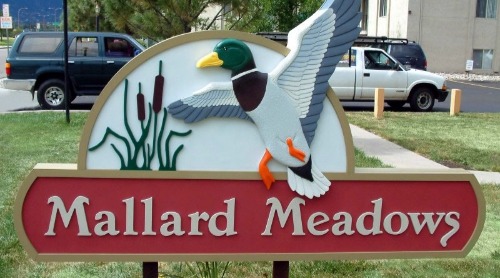11 Outdoor Sign Tips
 There are several things to consider to optimize your outdoor sign. Attracting customers and letting people know where you are is the most important thing your outdoor sign does. How do you maximize its purpose? Here are eleven tips to consider for your outdoor sign.
There are several things to consider to optimize your outdoor sign. Attracting customers and letting people know where you are is the most important thing your outdoor sign does. How do you maximize its purpose? Here are eleven tips to consider for your outdoor sign.1. Design
Careful designing creates an effective sign. You must consider all the elements of your design including logo, fonts, and colors. You want to make sure your sign compliments your brand and has consistent messaging with your business as well. Additionally, consumers will ignore your sign altogether is it doesn’t stand out enough. Much like any other form of marketing or advertising it needs to make a lasting impact on potential customers.
2. Illumination
Making your sign as legible as possible will only help viewers take notice. Lighting your sign is one way to stand out and make sure you’re visible even at night. Illuminating your sign can turn it into a 24-hour advertisement and make yourself known to consumers even when you’re not open! There are three ways to illuminate your sign. The first is Face Lit Letters where the light shines from inside the letter to make the letters themselves shine. This lighting can be adjusted to add depth or readability and is the most common way to illuminate signs. The second is reverse channel letters where the letters are lit from the back and the light shines onto the surface behind it. It is also known as Halo-lit channel letters and creates a soft glowy effect. Lastly there is the classic neon sign method. Used commonly up until 1990’s, it is a characteristic and unique look that started in the 1900s.
3. Size
You can make your sign as large as you’d like, as long as you are within your city’s municipal guidelines. Making sure you know of any restrictions will help when choosing how large your sign can be. While bigger can mean better visibility and readability, not overdoing it can be a good call.
4. Height
Placing your sign at the right height all depends on its location. You want to consider placing your sign high enough to be seen at multiple angels and to avoid it being hidden from view. If you’re placing your sign by a busy roadway or highway you want to make sure your sign is raised above brush, trees, and even phone lines. For signs aimed in spaces with frequent foot traffic you want a sign that’s lower to the ground and more at the consumer’s level.

5. Width
Make sure you sign is wide enough to fit your carefully crafted design. Don’t sell your design short and force the letters or logo to get too snug. It is important to maintain readability, even from a distance. Having a nice width with room for your design to breathe can make the different between leaving a lasting impression on the consumer or allowing them to pass it up without second thought
6. Legibility
Making sure your creative design is legible, even from a distance, as it plays the most important roll for your sign. When people can’t read your sign, they won’t know what you could be about and will most likely pass it over. It’s advised that letters are one inch tall for every twenty-five feet. A driver at 100 feet away would need the letters to be 4 inches tall. Picking an easy-to-read font over a flashy design font is the best practice here.
7. Environmental Factors
As discussed in a previous blog about sign mistakes people make, you must factor in the environment for your outdoor sign. Choosing the right material is critical to make sure your sign doesn’t fade in the sun, or crack under the pressure of the wind. The fresh appearance of your sign is important to the first impression of the consumer. Consulting a knowledgeable sign company that can advise you on which substrate you need is a great start.
8. Signs are an Investment
Think of a sign as a long-term investment. It can be expensive to get a great design, make it the right size, and get it made from the right substrate. That upfront cost can pay out in the long run as your sign can attract a lot of consumers and provide returns in the future.
 9. Permits
9. PermitsBeing knowledgeable about sign permits and local ordinances can save you a lot of hassle. Get to know what permits you need and all the ordinances you need to follow before getting your sign. This can prevent the sign from being taken down or the extra charge of resizing.
10. Installation and Mounting Options
There are many ways to mount your signs. Along walls, on roofs, you would be surprised how many different options there are! Make sure to check into all different options and think about the most optimal place for your sign and how it would go there.
11. Placement
Make sure you place your sign for optimal exposure. Research shows that signs places parallel to the road need to be seventy percent larger than those mounted perpendicular. If it is not larger your sign cannot be read in time and will likely go unnoticed. Another factor to consider if your sign is placed beside a roadway, is how fast is the potential customer traveling? A car traveling at thirty miles per hour with only one lane means the sign needs to be seen from 155 feet away. With two lanes it needs to be seen at 410 feet away. Taking this into consideration can affect where your sign is placed and what design elements to use to catch their attention.
Making that lasting impression on anyone passing by your sign can make the difference from a customer and another stranger. Let people know who you are and get the most viewing out of your sign with placement and design, amongst other things listed. Make sure you keep in mind permits and regulations as you plan out your outdoor sign


